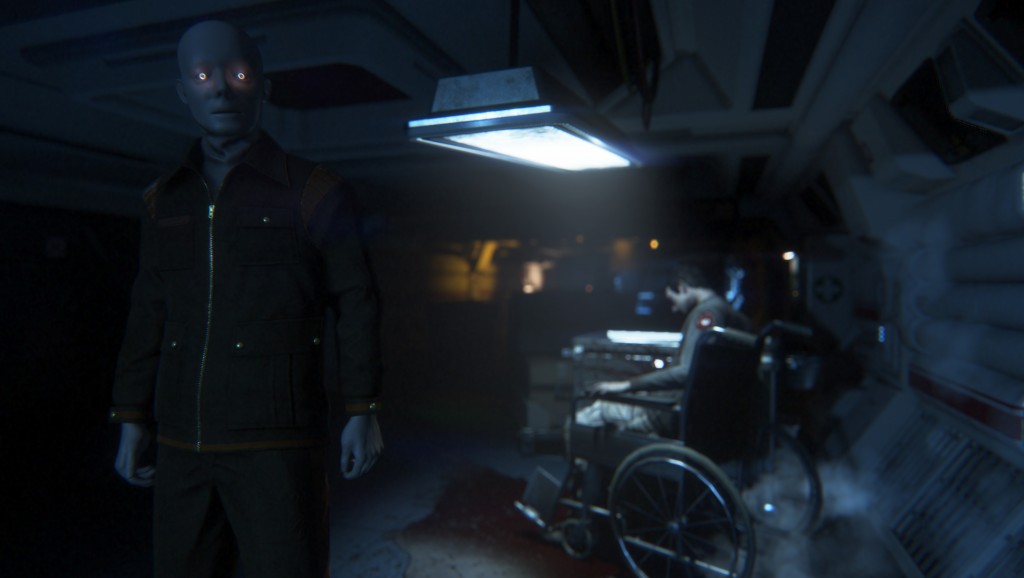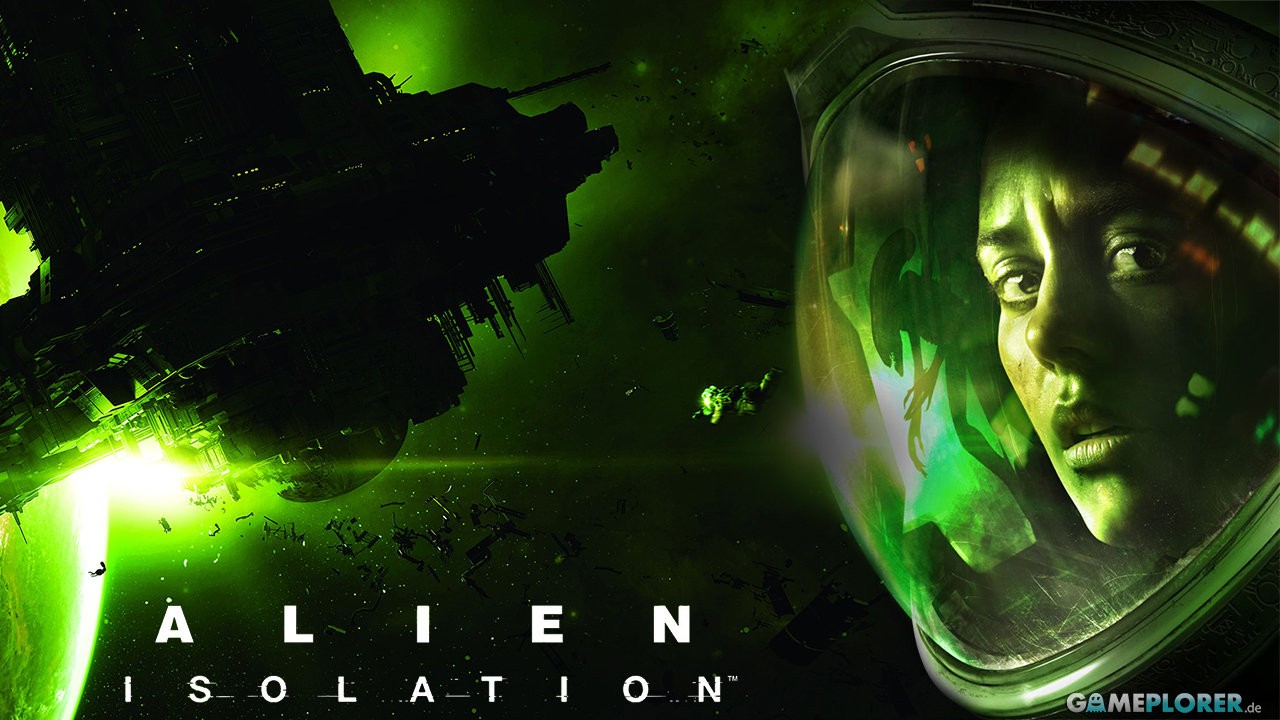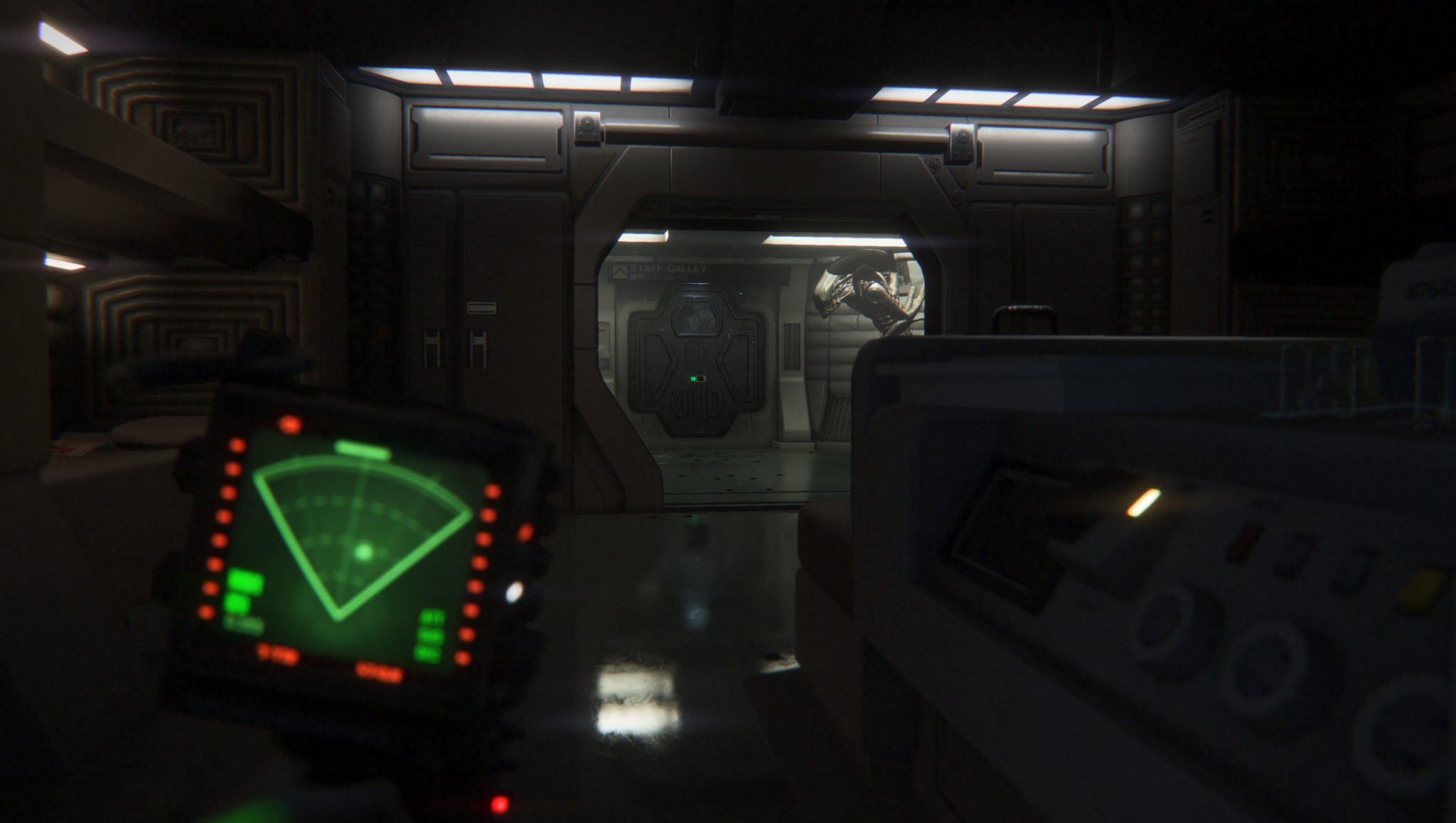The Sound Architect was very fortunate to speak to Sam Cooper and Byron Bullock from the Creative Assembly sound design team for the upcoming SEGA title Alien Isolation!
This game looks to be fantastic and after experiencing the demo at EGX Rezzed we can already hear that this game is going to sound terrifying!
“Discover the true meaning of fear in Alien: Isolation, a survival horror set in an atmosphere of constant dread and mortal danger. Fifteen years after the events of Alien™, Ellen Ripley’s daughter, Amanda enters a desperate battle for survival, on a mission to unravel the truth behind her mother’s disappearance.
As Amanda, you will navigate through an increasingly volatile world as you find yourself confronted on all sides by a panicked, desperate population and an unpredictable, ruthless alien.
Underpowered and underprepared, you must scavenge resources, improvise solutions and use your wits, not just to succeed in your mission, but to simply stay alive…”
Read our full interview below:
How much were you influenced by the original film and what techniques did you replicate if any?
Sam Cooper
We’ve been heavily influenced by the original films and have striven to create an authentic experience that replicates the lo-fi sci-fi aesthetic of the Ridley Scott original. The biggest challenge we’ve faced is to create a 70s vision of the future that sounds retro whilst simultaneously having contemporary production values. Maintaining retro-authenticity whilst authoring an experience worthy of next-gen hardware has been one of our main goals.
We were lucky enough to be given access to archived material recorded for the original Alien movie which we’ve used as layers or used the isolated stems for reference material to replicate the recordings. In a lot of cases, the material was very old and grainy, which was sometimes what we wanted but in other situations, it was preferable to recreate a higher fidelity version.
We also made sure to steer well clear of the squeaky-clean sci-fi aesthetic associated with more typically futuristic franchises. Ridley Scott’s vision of the future was a run down, dystopian, worn universe. Everything had big clunky buttons and tactile interfaces. There’s almost a spooky juxtaposition to finding very ordinary objects in the out-of-the-ordinary situation that’s posed by Alien.
Byron Bullock
Alien: Isolation takes place in, and is very much inspired by, Ridley Scott’s original Alien. The game is set some 5 years after the events of the movie and you play as Amanda Ripley, Ellen Ripley’s daughter.
We’re set very much in the same era as the original film so we have tried to use as much original material and taken influence from that first film as possible. The film was made in 1979, which was before most of our sound crew on Alien: Isolation were born, a time of quarter inch tape, razor blades and all things analogue.
Finding original audio reference and information on how sounds were made is tough, very tough…however, our intrepid Creative Director Al Hope did have some luck! He worked closely with Fox and got someone to go down into the vault on the Fox lot and dig out some old quarter inch reels. We had them digitised and to our amazement found that they had the original musical effect layoffs. These were the analogue tapes that the British sound engineers had recorded their sound effects to! We found the original iconic space whale from the opening of the film and other recognisable effects, a bit of a gold mine 🙂
We’ve used the effects, especially the space whale, all over the game and our trailers. It’s great because we’ve been able to take the original recordings and add a modern spin to them. Double tracking, adding sub harmonics, morphing, time-stretching, adding strange Impulse response, all kinds of things to create new variations of original iconic sounds. It helps to add an authentic Alien feel to the experience, it pays homage to the original in a subtle way and gives a new lease of life to some long-forgotten dusty eight track tapes!
What is your main approach with the sound design on this project?
Sam Cooper
Our approach has been to work backwards from the perspective of the player. We’re constantly questioning precisely what it is we hope to make the player feel in any specific moment and what we need to achieve to deliver that feeling.
We use the audio in Alien: Isolation as a way to help deliver on the psychological aspects of horror and survival. This involved a lot of research into psychoacoustics and innate or conditioned responses to certain sounds and frequencies early on in the project.
We’ve taken the principles of psychological horror and laced the audio with a soundscape that will evolve throughout the game. However, it can be fatiguing to feel tense constantly and the fear loses its impact if it’s relentless, so we like to ease up on the tension where it’s appropriate, whilst keeping things unpredictable. For example, if the player finds themselves feeling briefly at-ease, they’ll never know for how long or under what circumstance the soundscape will change. They’ll never feel completely “safe.”
We’ve also incorporated a sense of ambiguity into the sound design pallet that will keep the player constantly second-guessing what they’re hearing. Often the sounds you’ll hear are representative of the mechanisms and events they’re attached to whilst having subtle and more abstracted elements that are carefully designed to help steer the element of fear in a certain direction.
Byron Bullock
Alien: Isolation is a first-person survival horror game and like the film, a haunted house in space. We’ve very much gone for a claustrophobic, isolated feel with the sound. We want the player to be on edge and frightened about what’s lurking in the dark or round the next corner.
It was very important that the sound design help support the horror, tension and suspense created by our unpredictable, adaptive, AI-driven alien. The alien in our game isn’t scripted, this means the player can never get comfortable. Every encounter forces the player to think on their feet and think quickly. Instead of memorising where the alien will go, you’re forced to take each encounter as it comes, it’s entirely unpredictable.
The alien listens for sounds in the environment, looks for light from your torch and can see you in the light. We had to create a sound engine that could cope with that, a dynamic system that could react to both the player and Alien. This then allowed us to change the sound, music and mix dynamically to help to suit any situation. This is key for horror, lowering the soundtrack before a scare or focusing in on certain sounds, helps add tension and suspense to a situation. Take the example of the player hiding under a table, trying to make as little noise as possible… the alien moves within a few feet of the player, looking for them… hunting them. It’s vital the sound engine could react to that and help increase the tension and suspense of the moment, it’s about driving an emotional reaction from the player.
We’ve deliberately gone for a very high dynamic range when it comes to the mix. There are moments where Amanda can be walking through dark corridors accompanied by the odd metal creak, distant ship rumble, the sound of her footsteps and the quiet flourish of Jerry Goldsmith’s score. We’ve not been afraid to use quiet and silence. It’s these quiet moments that help to heighten your senses and increase the tension. During these moments any sound can put you on edge, especially when you hear something moving in the vent above you or a blip on your motion tacker. We really want the player to feel isolated, like there’s no escape. We’ve really tried to emphasise the constant threat of danger, whether that be the ship, other humans, androids or the constant looming presence of the alien.
One of the game’s biggest directions is what we call ‘Lo-Fi Sci-Fi’, a term used to describe the technology and overall aesthetic of the world. Ripley’s world is one of CRT monitors, clunky push buttons and leavers, far the opposite of holograms and anything digital. This has dictated the audio direction for many of the user interfaces and devices Amanda acquires in the world.
Everything in the Alien universe has to feel analogue, tactile and real. Everything has a worn, used look and feel. A great example of this is the scene near the start of the film where MUTHR (the ship’s Computer) awakes the crew, the sounds are quite iconic and recognisable, they have a very mechanical, clunky and rhythmic character. We used lots of old floppy drive recordings, tape machines and other analogue devices to recreate the feel. Our new sounds placed alongside some of the original MUTHR sounds help to give the authentic Alien feel.
Were you inspired by the audio of any other games at all?
Sam Cooper
We’ve been inspired by lots of other games that have delivered outstanding audio experiences. Games like Dead Space, Outlast, Limbo and The Last of Us have all been inspiring. They’re all great examples of how audio can be used in interactive media to strongly support a sense of tension and fear.
We’ve also been strongly influenced by other media, classic horror films, Sound Designers and Directors. David Lynch and Alan Splett in particular are a great reference for using audio to build dread and a general sense of being at odds with your environment, the techniques they use to slowly transform a scene from ordinary to extremely uncomfortable can be quite subtle but extremely effective.
For us audio geeks are you able to tell us what equipment you’ve used?
Sam Cooper
We use a lot of different equipment for different jobs! Software-wise we’re all running Nuendo, Wavelab, Soundforge, Pro-Tools and Izotope RX. We mainly use the NI Komplete bundle for synthesis and sampling.
Go-to plugins include Altiverb, Speakerphone, IRCam, Waves Platinum, Waves Tapes Tubes and Transistors.
We all have a Fireface 800 interface which has good preamps for studio-recording and when we go out on location we mainly use a Fostex FR2.
Our most-used microphones are a pair of 8040s which have an extended frequency range, allowing for heavy pitch-shifting when recorded at a high sample-rate (which is very useful when you’re recording sounds intended for a huge space vessel).
Byron Bullock
One of my favourite mics however was a homemade coil pickup mic I borrowed from a good friend of mine. The coil mic picks up all kinds of strange sounds, a good example is the SEGA title screen scene in trailers and the start of the game, all the sounds for that were recorded using that mic! We also experimented with mics in condoms for internal gore sound effects – that sounded great! We also experiment with circuit bending, which was fun.
Game-side, we use a combination of Wwise and an in-house tool dubbed Cage. Cage is one of the most powerful development tools I’ve used and was created in-house by our awesome tools team. It’s similar in ways to Frostbite and in some ways akin to UDK. It’s a visual scripting tool that allows us to create some incredibly advanced logic and populate the world with sounds quickly and easily. One of its biggest strengths is how it brings all departments together. A sound designer can work with a VFX, lighting and game designer all at the same time to create tightly integrated FX and game sequences. Fast iteration is key to our game development.

What do you hope effect of the audio experience is on the players?
Sam Cooper
Our goal is to support the aesthetic of the game and sonically transport the player to dark and unpredictable 1970s vision of the future.
We’ve worked tirelessly to carefully sculpt the sonic palette of our game in a way that strongly supports the narrative and manipulates the tension in every moment of gameplay.
We hope the player will come away from Alien: Isolation with the terrifying and unforgettable experience of being alone, in space, with the Universe’s most fearsome and deadly predator. If the audio supports that then we’ll be very happy with the experience!
Byron Bullock
I hope we’ve created a sound track that supports and intensifies the survival horror experience. It’s been a huge effort from the team at CA, not just the sound guys but the art team, level design, lighting and VFX. Only when all these elements come together do we have a truly scary horror experience and I can’t wait for people to play it!
You can hear more about the sound in the Insider video from gamespot below:
We’re very much looking forward to the release on October 7th 2014!
Keep up to date with Alien: Isolation at the links below, especially their YouTube for updated trailers and videos!:
YouTube: Alien: Isolation
Official Site: Alien: Isolation
Twitter: Alien: Isolation
Facebook: Alien: Isolation
Plus Find Sam & Byron at the following linkes:
Sam Cooper: LinkedIn
Byron Bullock: Twitter
Enjoy!
The Sound Architect
Interview by Sam Hughes
Uploaded 27/06/14




